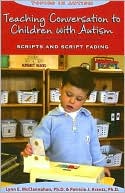Category Books
- Fiction Books & Literature
- Graphic Novels
- Horror
- Mystery & Crime
- Poetry
- Romance Books
- Science Fiction & Fantasy
- Thrillers
- Westerns
- Ages 0-2
- Ages 3-5
- Ages 6-8
- Ages 9-12
- Teens
- Children's Books
- African Americans
- Antiques & Collectibles
- Art, Architecture & Photography
- Bibles & Bible Studies
- Biography
- Business Books
- Christianity
- Computer Books & Technology Books
- Cookbooks, Food & Wine
- Crafts & Hobbies Books
- Education & Teaching
- Engineering
- Entertainment
- Foreign Languages
- Game Books
- Gay & Lesbian
- Health Books, Diet & Fitness Books
- History
- Home & Garden
- Humor Books
- Judaism & Judaica
- Law
- Medical Books
- New Age & Spirituality
- Nonfiction
- Parenting & Family
- Pets
- Philosophy
- Political Books & Current Events Books
- Psychology & Psychotherapy
- Reference
- Religion Books
- Science & Nature
- Self Improvement
- Sex & Relationships
- Social Sciences
- Sports & Adventure
- Study Guides & Test Prep
- Travel
- True Crime
- Weddings
- Women's Studies
Teaching Conversation to Children with Autism: Scripts and Script Fading »

Authors: Lynn E. McClannahan, Patricia J. Krantz, Sandra L. Harris
ISBN-13: 9781890627324, ISBN-10: 1890627321
Format: Paperback
Publisher: Woodbine House
Date Published: December 2005
Edition: (Non-applicable)
Author Biography: Lynn E. McClannahan
Book Synopsis
TEACHING CONVERSATION TO CHILDREN WITH AUTISM describes scripts that parents and teachers can use to help children learn to initiate conversation, thereby improving communication. Drs. McClannahan and Krantz-authors of ACTIVITY SCHEDULES FOR CHILDREN WITH AUTISM-have successfully used scripts and script-fading techniques based on their clinical observations and research, and founded on applied behavior analysis principles.
The authors begin by thoroughly explaining the script and script-fading processes and include many examples to support the instructions. A script is an audiotaped or written word, phrase, or sentence that often reflects the child's preferences and interests. For very young children and nonreaders, scripts are paired with pictures of desired objects or activities.
The process starts when a child engages in conversation with an interaction partner by reading a script or playing it on an audio card reader to start the conversation (e.g., "I like yogurt."). The partner supports the conversation with a response (e.g., "Yogurt is good," or "You had yogurt for lunch."). After the child masters a few scripts, the script-fading process begins. The last word of the script is removed, then the next to last, and so on, until the script is absent. After scripts have been introduced and faded, many children learn to spontaneously initiate and pursue social interaction.
TEACHING CONVERSATION TO CHILDREN WITH AUTISM also covers:
Prompts and rewards
Observing, evaluating, and measuring results
Activity schedules, card readers, and voice recorders
Conversation activities
Scripts for readers andnonreaders
TEACHING CONVERSATION TO CHILDREN WITH AUTISM demonstrates that scripts are a valuable tool to improve interaction for children and even adolescents and adults. Use scripts at home, in school, in the workplace, and in the community.
Children's Literature
This book, targeting parents and professionals, aims to teach interaction skills, including verbal and nonverbal components, to children with autism, using a behavioral approach of scripts and script fading. The text provides simple directions and easy-to-understand strategies, supports varied ability levels, teaches adult supports that will allow the child errorless learning and provides effective data sheets and analysis tips. A script is an audiotaped or written prompt used to start or continue a conversation, and should be individualized considering a child's language development, special interests, etc. Scripts are then faded by removing words one by one from the prompt. Children can then finish their statements by verbalizing the previously-scripted words and novel phrases learned from communication partners, and combine previous scripts, etc. The authors suggest that this type of approach be used in conjunction with an activity schedule, reminding children to interact with others at specified times. Their hope is that this method will teach children to participate in social exchanges, alter others' behavior and give the child some control over his environment. This approach focuses on prompting a child's verbal expression, and does not discuss other options, such as using picture communication for children who are unable to use verbal language. Also, readers should be cautioned that this behavioral approach may not feel like a natural approach to teaching, as the authors suggest not using language in response to the child that he or she has not yet mastered, does not necessarily pair suggested skill sets with developmental language skills, prompts this language skill only atscheduled times, and suggests sample responses from conversation partners, which may be unnatural and atypical for some families. Reviewer: Alison Wilber
Table of Contents
Subjects
 Special Education
Special Education  Education - Developmental Disabilities
Education - Developmental DisabilitiesEducation & Teaching
 Special Education
Special Education  Education - Learning Disabilities
Education - Learning DisabilitiesParenting & Family
 Autism & Asperger's Syndrome
Autism & Asperger's Syndrome  Autism in children -> Education -> Parent guides
Autism in children -> Education -> Parent guidesParenting & Family
 Children with Special Needs
Children with Special Needs  Autism and Asperger's Syndrome - Popular works
Autism and Asperger's Syndrome - Popular works
